Do NOT pull or cut down the plant. OISC will properly remove and dispose of the plant to prevent spreading seeds and re-sprouting. Please report glory bush to OISC. Send photo and location to oisc@hawaii.edu or text 808-286-4616. You can also call our office at 266-7994.
Glory bush (Tibouchina urvilleana)
Family: Melastomaceae
Tibouchina urvilleana, aka glory bush, is on the State of Hawai’i Noxious Weed List and is also known as lasiandra, princess flower, glory tree or longleaf glory tree. It is illegal to sell or transport all 350 species of the genus Tibouchina in Hawai‘i. Glory bush is native to Brazil, but the plants have been grown as popular ornamentals and have escaped cultivation in Hawai‘i. Glory bush is an aggressive colonizer of disturbed areas that can create monotypic thickets that displace native emergent species.
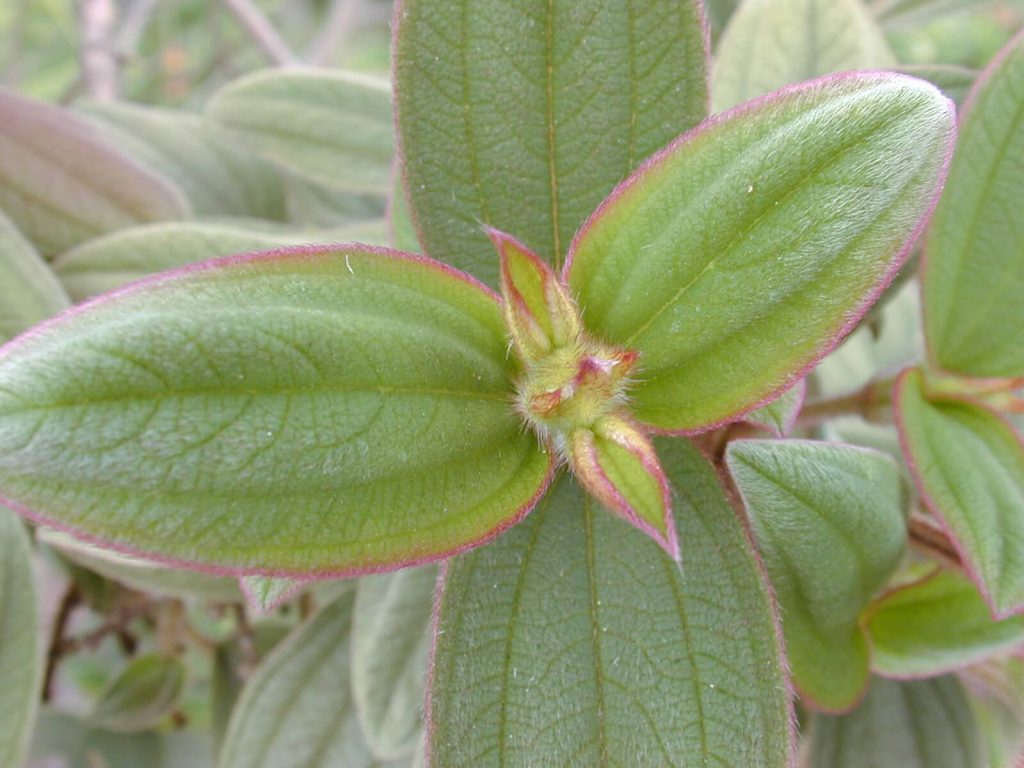
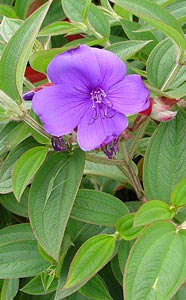
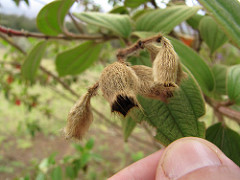
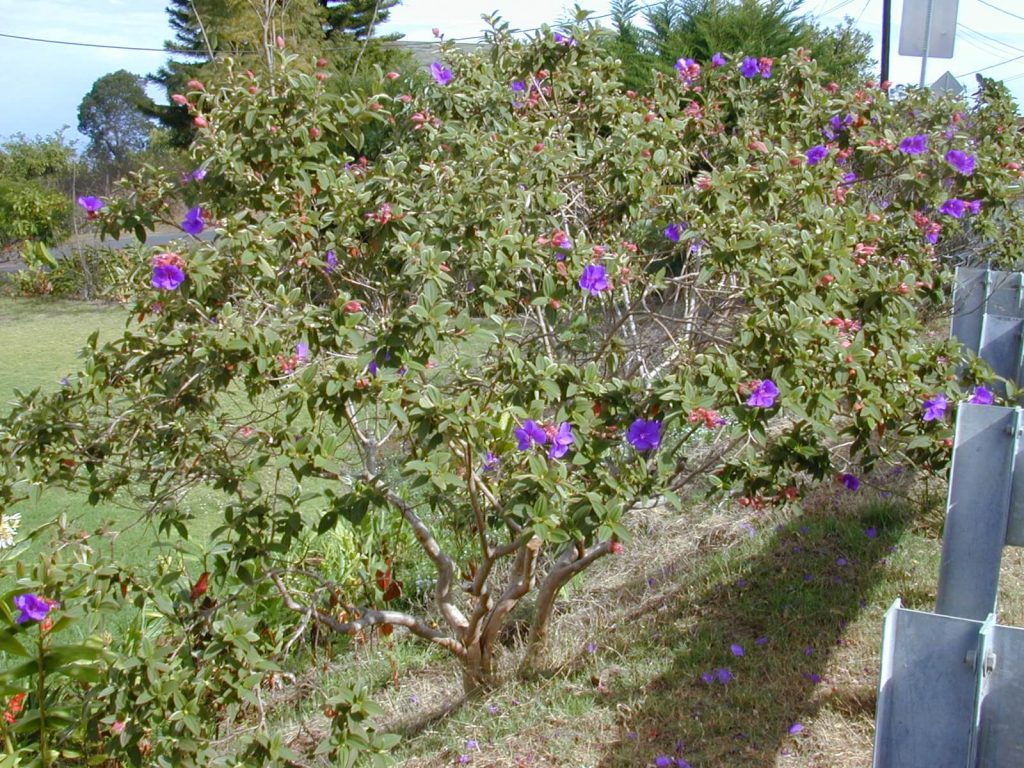

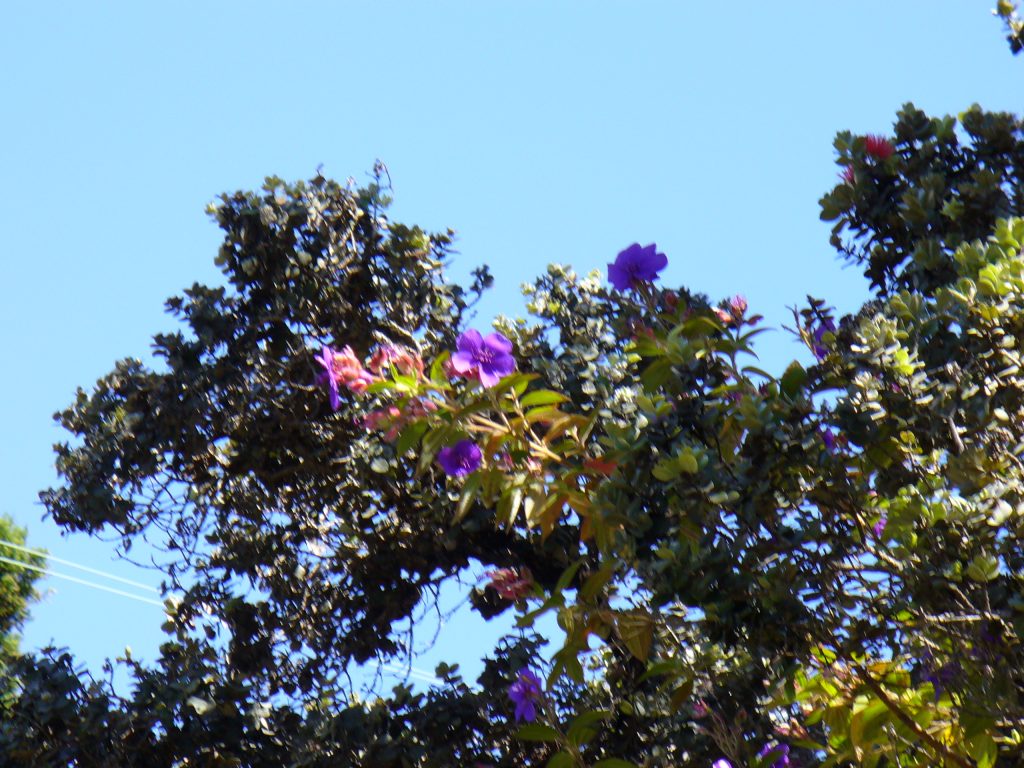
Description:
- Grows as a shrub or small tree between 1-4 meters (3-13 feet)
- Leaves are oval shaped and velvety, about 4-12 cm long (1.5 – 4.5 inches) and 2-5 cm wide (.75 – 2 inches)
- Flowers are showy and purple, with 5 petals about 20-40 mm (.75-1.5 inches)
- Fruits are inconspicuous small, round, hard capsules <.5 inch
Harm:
- Tibouchina urvilleana threatens native areas by forming monotypic thickets that outcompete and displace native plants.
- Tibouchina species belong to the family Melastomataceae, a family that contains many invasive plants including the superweeds, clidemia and miconia.
- Certain Tibouchina species are considered invasive in New Zealand and are excluded from French Polynesia.
- All 350 plants in the genus Tibouchina have been declared noxious weeds by the State of Hawaii. It is illegal to sell or transport noxious weeds.
On O’ahu:
- Glory bush has been detected in the Tantalus area in the Honolulu Watershed. OISC is partnering with landowners to conduct management efforts and eradicate glory bush from this priority watershed.
- The O‘ahu Invasive Species Committee will remove your glory bush plant and replace it with a native plant for free. For more information or to report glory bush, call OISC at 286-4616 or email oisc@hawaii.edu.
Pest Alert and Publications:
For more information, see:
- Tibouchina herbacea information from HEAR
- Tibouchina herbacea information from PIER
- Tibouchina heteromalla information from HEAR
- Tibouchina longifolia information from HEAR
- Tibouchina granulosa information from HEAR
- Tibouchina urvilleana information from PIER
- Tibouchina urvilleana information from ISSG
